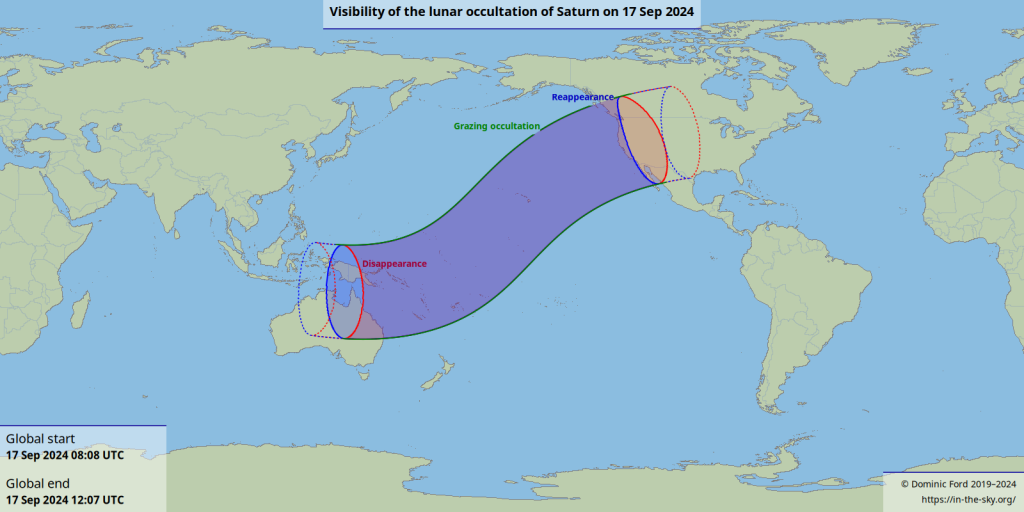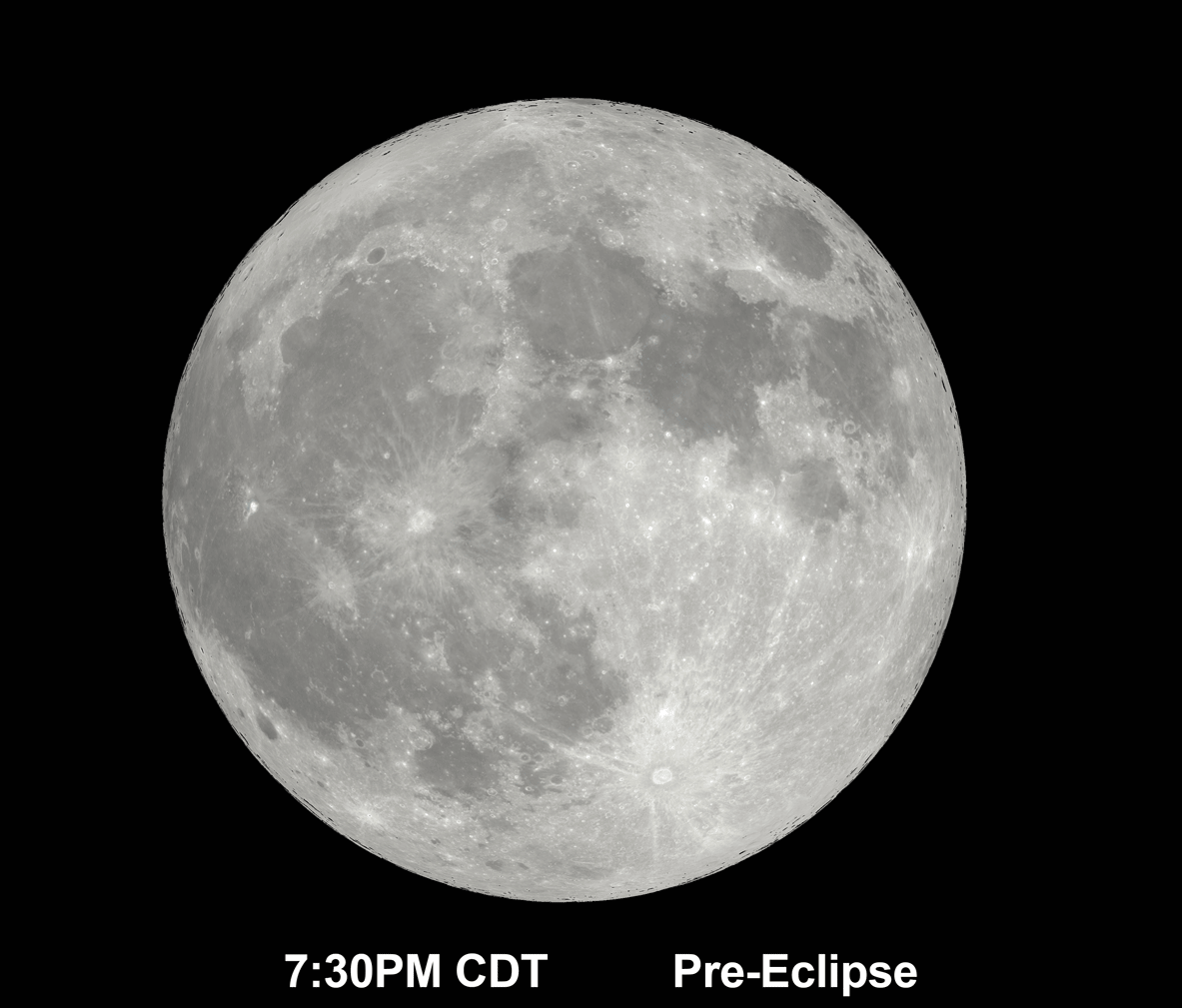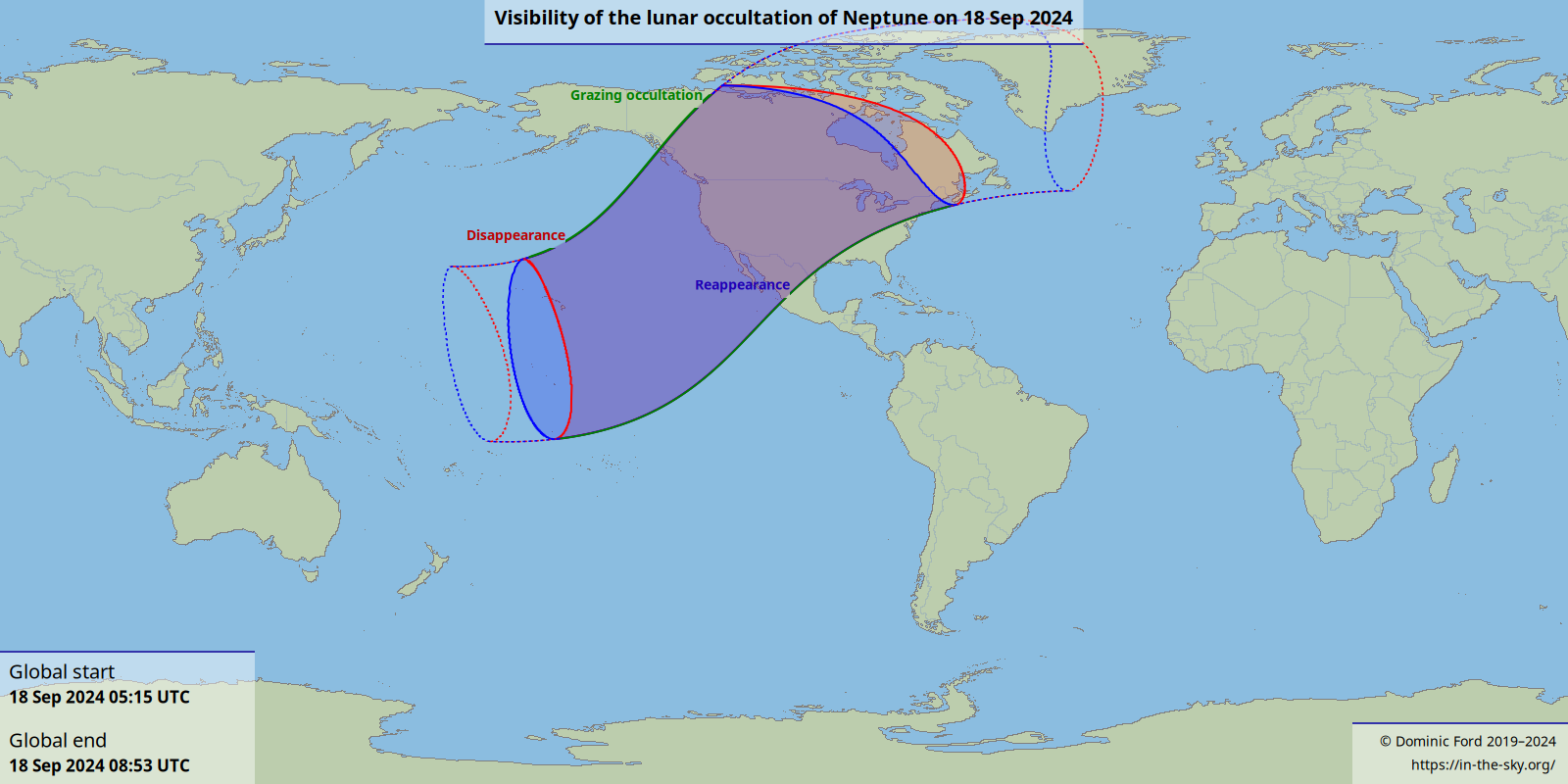The middle of September turns out to be a busy time for our Moon in 2024. This month, skywatchers will have an opportunity to view a partial lunar eclipse and two lunar occultations. Not only will clear skies be needed but location will also play a big role as to who can witness these events.
Saturn Disappears Behind the Moon

First up is a lunar occultation of Saturn! During its 27.3-day orbit, the Moon is constantly passing in front of background stars, galaxies, and nebulae. Occasionally it will pass in front of, or occult, a bright star. This recently happened with the star Spica. The renowned Nashville astronomer Edward Emerson Barnard observed an occultation of the star Beta Capricorni in 1883. As the Moon moved over the star, Barnard expected it to disappear instantly. Instead, he observed the star dim dramatically for a split second before winking out. He realized that Beta Capricorn had to be a double star, and subsequent observations confirmed his suspicion. An occultation led to the most prized of his 36 double star discoveries.
Some of the most memorable lunar occultations, however, are of planets. In the early morning hours of Tuesday, September 17, the Moon will occult Saturn for some viewers in the western half of the United States, Mexico, and Canada starting around 6am CDT. Unfortunately, the Moon will have already set for Nashville and the rest of the eastern U.S. The exact timing of the occultation will depend upon one’s location due to the Moon’s proximity to Earth. Observers too far north or south will see the Moon just miss Saturn, but those in the path of visibility will see the ringed world disappear partially or completely for periods ranging from just a few minutes to about an hour (again, depending on observing location). Some folks in the Pacific and northern part of Australia will see the Moon rising while Saturn is hidden, but they will get to witness the planet emerge. Even if you don’t get to witness the occultation, seeing a bright planet by the Moon, especially through binoculars, is always pleasing sight.

A Bite is Taken From the Moon
Next on the event list is a partial lunar eclipse. Occurring about once every six months, a lunar eclipse occurs when the full Moon passes through the shadow of Earth. Unlike solar eclipses, which can blind careless observers, lunar eclipses are completely safe to view with your bare eyes, with binoculars, or with a telescope. Unfortunately, the lunar eclipse of September 17, 2024, won’t be very dramatic because the Moon barely catches the Earth’s dark, inner shadow (the umbra). As such, we call this a partial lunar eclipse. For the majority of the lunar eclipse, the Moon is only going to be in Earth’s lighter, outer shadow (the penumbra) and will only appear slightly darker, more so on the upper half, than normal. The penumbra reaches the lunar surface at 7:41pm CDT when the Moon is only 10 degrees above the eastern horizon in Nashville. If you have a clear eastern horizon to catch the Moon just as it rises, you may mistakenly think the Moon is in mid-eclipse when you first catch site of it. Its very low altitude means you will be observing it through a significant amount of thick atmosphere. As the white light reflected by the Moon travels through the atmosphere, the bluer colors are scattered more easily than the redder colors. As a result, the warmer colors of the rainbow reach us more easily, and the Moon takes on a deep orange-yellow hue; however, this is not the eclipse. This effect happens whenever we see the Sun, Moon, and other objects near the horizon – it is the same reason why sunsets and sunrises are very orange-red. As the Moon gets higher in the sky and there is less air to look through, you will notice this color fading despite the fact that the Moon is actually going deeper into eclipse.
The real action begins around 9:15pm when the umbra begins to make an appearance. Over the next 30 minutes, a portion of the upper Moon will darken noticeably. After that, the umbra begins to retreat, fully leaving the lunar disk by 10:15pm. Finally, over a period of 90 minutes, the penumbra makes its exit to bring the Moon back to complete illumination by 11:47pm. Though this lunar eclipse won’t quite match the splendor of a total lunar eclipses (a.k.a., blood moon), it is still a neat sight to behold, especially since simple, naked-eye views are some of the best.
The next lunar eclipse (a total) will begin in the late hours of March 13, 2025, and proceed through to nearly sunrise the following day, and Nashville will be a prime observation spot. Keep your fingers crossed for clear skies, especially as this will be the last total lunar eclipse that Nashville and much of the United States will get to see until June 2029!
Get animation and times for your area at https://www.timeanddate.com/eclipse/lunar/2024-september-18. Set your location at the top-right of the page

Neptune Winks Out For a Bit
Finally, there is one other notable lunar occultation the following night, September 18. This time, the Moon will occult our most distant planet, Neptune. The lunar limb will reach Neptune around 2:54am CDT and reappear about 25 minutes later for Nashville. As with the Saturn occultation, local times for this event will depend on your location. Observing the occultation will require the use of a telescope as Neptune is always below naked-eye visibility. In addition, the Moon will still be near its full phase, so the glare of the lunar surface will make it especially difficult to pick out the faint planet. Still, prior to occultation, one might be able to use the Moon as a guidepost to locate the frigid world. It may be possible to observe the occultation if all but the limb (edge) of the Moon is kept outside the field of view of the eyepiece. In any case, this will not an easy event to observe. For more information about upcoming lunar occultations, check out this fun resource.
